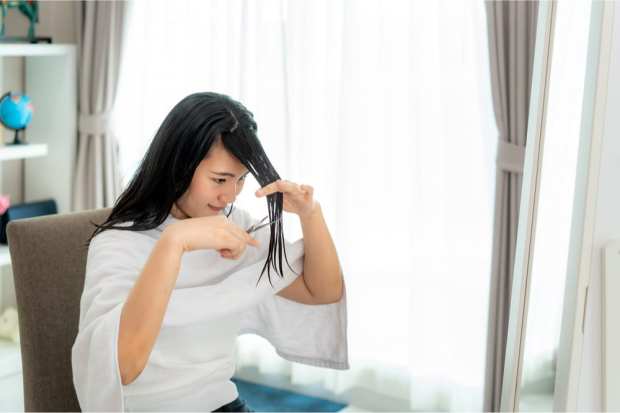Will Americans Return To Salons After Doing Their Hair At Home During The Pandemic?

When the pandemic hit and shut down hair salons along with other businesses nationwide, the effect on personal aesthetics started out as something of a joke. TV personality Kelly Ripa began tracking the progress of her gray roots growing out, celebrities began serving up their makeup-free selfies and people shaved their heads in what became the year’s unexpected hair trend. But as quarantines dragged on, many U.S. consumer have gone “do-it-yourself” (DYI) on their beauty routines — even as states begin to phase out lockdown orders against salons.
According to the Financial Times, Americans have spent billions of dollars to keep looking good in lockdown — and have learned to make a lot of that happen by the skill of their own hands. The most popular beauty items for purchase — hair clippers, hair dyes and nail polish — have seen sales surge both online and in those stores that remained open.
The FT said U.S. health and beauty sales picked up 13 percent — or roughly $3.7 billion — from this time last year. Much of that spike has come from digital sales, which surged 31 percent year on year to $9.28 billion.
Some of that stems from health-related purchases like hand sanitizer during the lockdown’s early phase. But cosmetics sales have powered a lot of the expansion more recently, according to Nielsen data. Consumers trapped at home are apparently still seeking to look good even while locked down.
That’s true even though hair salons were or are closed in many states, making professionally cutting, dyeing, highlighting and otherwise treating your hair impossible for several months. But if growing out your gray roots was something of a joke early on, consumers have stopped laughing — and started spending on DIY options instead.
For example, online sales of hair coloring have more than doubled to $128 million vs. $50 million during the same period in 2019. Online nail polish sales likewise more than doubled to $35 million from $14 million in the same timeframe last year.
Similarly, hair styling tools have also seen sales pick up 20 percent to $145 million. Specifically, in-store sales of clippers for men’s hair have recorded a 53 percent sales rise to $59 million.
“A lot of guys are taking more interest in styling and trimming themselves,” said Kimmy Kwok, chief operating officer at BluMaan, a Vancouver-based hair products company. “They also have just had more time on their hands.”
The spike in DIY beauty regimens raises two questions. The first one: Why have consumers who in some cases shaved their heads because no one was going to see them anyway suddenly decided to convert their bathrooms into beauty salons?
Andrea Szasz, principal at the consultancy Kearney, said consumers seek to control what they can during stressful times — which for many people means focusing on their appearance. “We are in a time of high stress,” Szasz said. “People are locked inside their apartments. They might be at home with three screaming kids. Women, in particular, are really trying to take time for self-care.”
The second question is: What happens now that consumers have spent several weeks practicing DIY beauty? Do they go back to salons and nail parlors as states ease lockdowns, or do they stick with doing things themselves?
Beauty-trend forecaster Clare Varga told Harper’s Bazaar she isn’t sure consumers will run back to salons. Instead, the industry seems on the verge of hitting the reset button in terms of what consumers need to feel “pretty.”
“Even once restrictions are relaxed, it is likely we will still spend more time at home and interacting less person-to-person,” she said. “Without an audience, there will be less reason or need to put on a full face of makeup every day — the effort won’t seem justified. As a result, we’ll see much more focus on and demand for products that make us look fresh, healthy, alert and awake.”
Insofar as people will be wearing makeup in an era of enforced public mask wearing that will leave the bottom half of your face covered, well-applied eye makeup seems likely to become popular. Other forms of makeup might not do as well.
But on the upside, Reena Hammer, managing director of luxury salon Urban Retreat, told Harper’s that people who have been doing their own beauty care have come to appreciate professional services more than they ever have. “One real positive in all this is the realization that what [professional stylists] do isn’t ‘fluffy,’” Hammer said. “The tides are turning on thinking that beauty is just superficial.”
